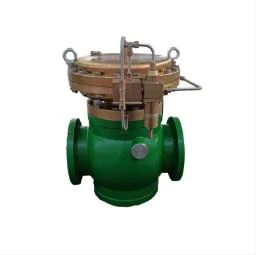
Dec . 13, 2024 14:00
Back to list
منظم الضغط
Understanding Pressure Regulators Functions and Importance
Pressure regulators play a vital role in various industrial and residential applications, ensuring the safe and efficient use of pressurized gases and fluids. By maintaining a stable output pressure regardless of fluctuations in inlet pressure, these devices are crucial in systems where precise pressure control is necessary for optimal performance and safety.
What is a Pressure Regulator?
A pressure regulator is a mechanical device that reduces and stabilizes the pressure of a fluid or gas. It typically consists of an inlet port, an outlet port, a valve, and a sensing element that monitors the output pressure. When the fluid or gas enters the regulator, it encounters a diaphragm or piston that adjusts the valve opening based on the desired output pressure. This allows the regulator to automatically maintain the set pressure, even if the inlet pressure varies due to changes in supply or system demand.
Types of Pressure Regulators
There are several types of pressure regulators, each designed for specific applications. The most common types include
1. Single-Stage Regulators These are simple devices that reduce pressure in one step. They are typically used in applications where precise pressure control is unnecessary.
2. Two-Stage Regulators These regulators reduce pressure in two steps, providing more accurate control and better handling of fluctuating supply pressures. They are often used in industrial applications where stable pressure is critical.
3. Back Pressure Regulators These are designed to maintain a specified pressure in a system by controlling the flow of fluid or gas. If the system pressure exceeds the setpoint, the regulator opens to relieve excess pressure.
.
Applications of Pressure Regulators
منظم الضغط

Pressure regulators find applications in various industries, including
1. Medical In medical settings, pressure regulators are essential for controlling the flow of gases, such as oxygen, to ensure safe delivery to patients.
2. Manufacturing Many manufacturing processes require precise pressure control for optimal performance. Regulators help maintain the appropriate pressure levels in pneumatic systems, hydraulic machines, and chemical processes.
3. Energy In the energy sector, especially in natural gas distribution, regulators ensure that the pressure of gas reaching consumers is safe and within specified limits.
4. HVAC Systems Pressure regulators are critical in heating, ventilation, and air conditioning systems to ensure proper airflow and prevent system damage.
Importance of Pressure Regulation
The importance of pressure regulators cannot be overstated. They enhance safety by preventing over-pressurization, which can lead to equipment failure, leaks, or catastrophic accidents. Additionally, pressure regulators improve efficiency by ensuring that processes run smoothly at optimal pressure levels, thereby reducing energy consumption and extending the lifespan of equipment.
Moreover, proper pressure regulation contributes to product quality in manufacturing. Inconsistent pressure can result in defects or variations in product dimensions, leading to increased waste and reduced profitability.
Conclusion
In conclusion, pressure regulators are indispensable devices that ensure the safe and efficient operation of various systems across multiple industries. By maintaining a consistent output pressure, they protect equipment from damage and enhance overall process efficiency. As technology advances, the design and functionality of pressure regulators continue to evolve, further underscoring their importance in modern applications. Understanding and implementing the right type of pressure regulator for specific applications is crucial for maximizing safety, efficiency, and product quality in today's fast-paced industrial landscape.
Latest news
-
Safety Valve Spring-Loaded Design Overpressure ProtectionNewsJul.25,2025
-
Precision Voltage Regulator AC5 Accuracy Grade PerformanceNewsJul.25,2025
-
Natural Gas Pressure Regulating Skid Industrial Pipeline ApplicationsNewsJul.25,2025
-
Natural Gas Filter Stainless Steel Mesh Element DesignNewsJul.25,2025
-
Gas Pressure Regulator Valve Direct-Acting Spring-Loaded DesignNewsJul.25,2025
-
Decompression Equipment Multi-Stage Heat Exchange System DesignNewsJul.25,2025

